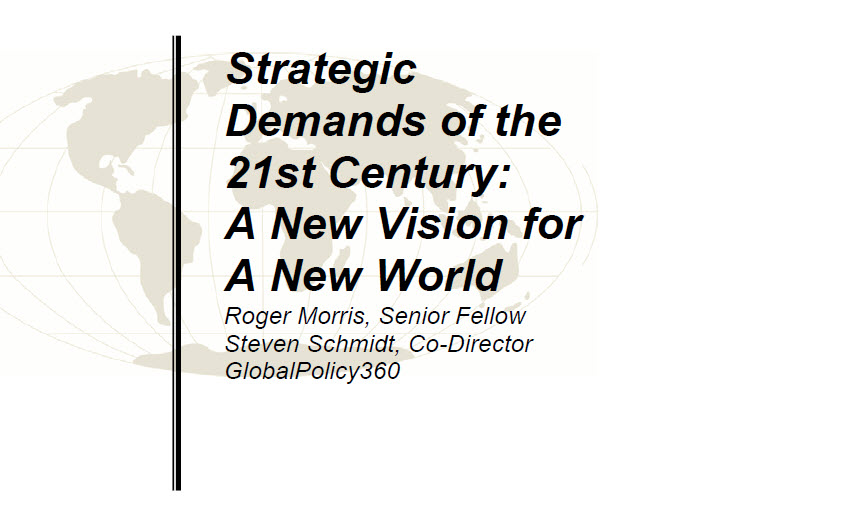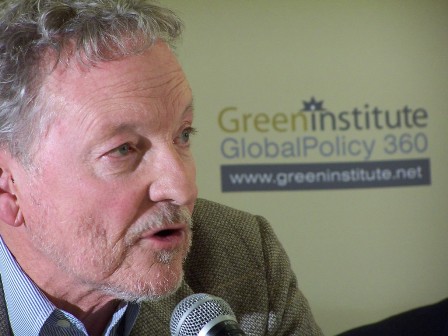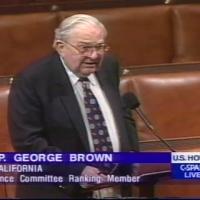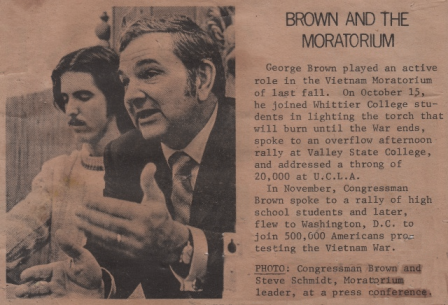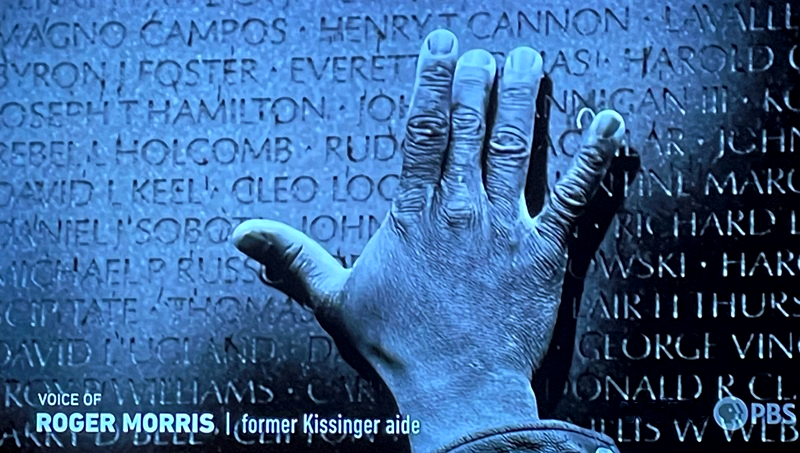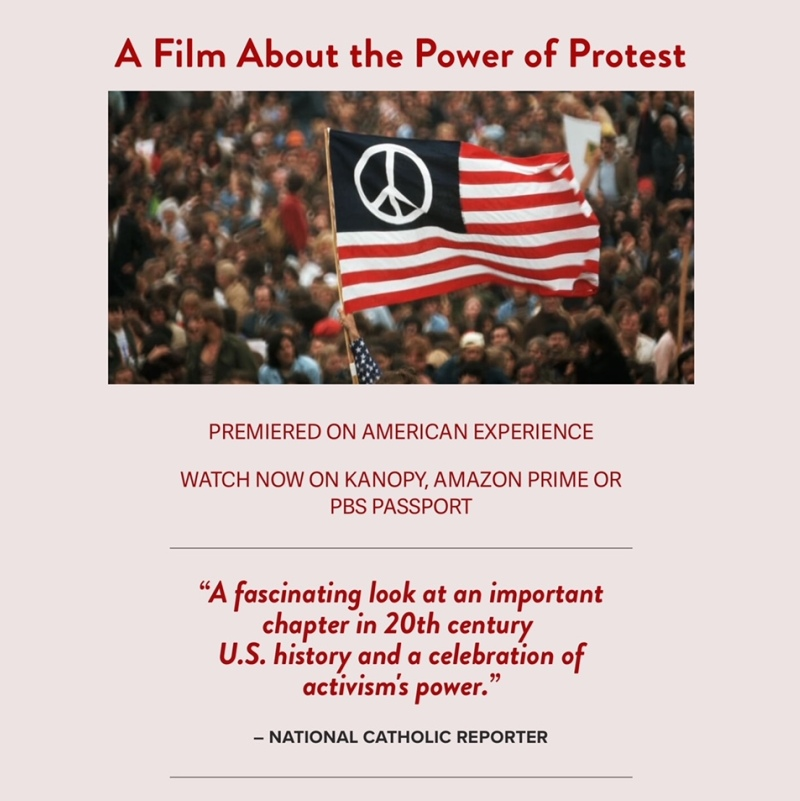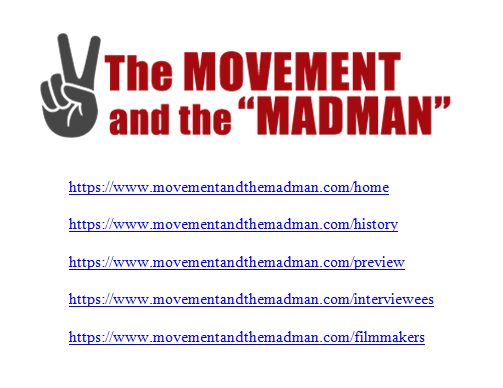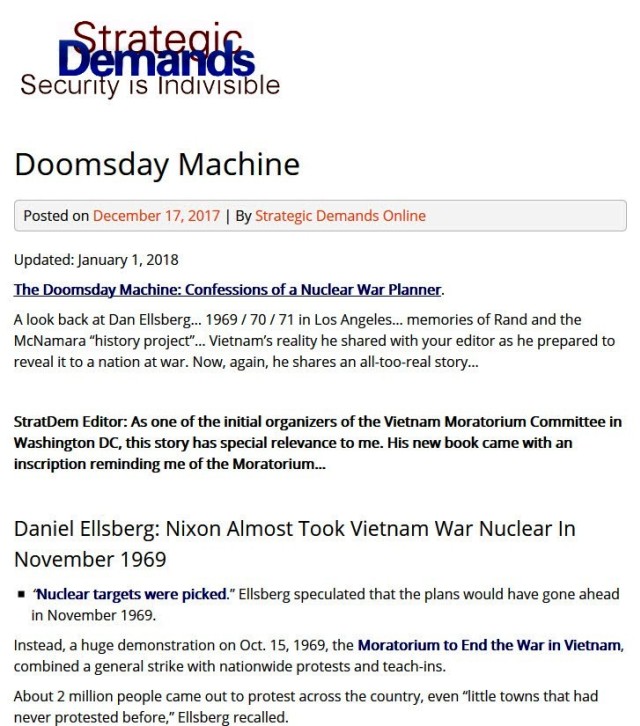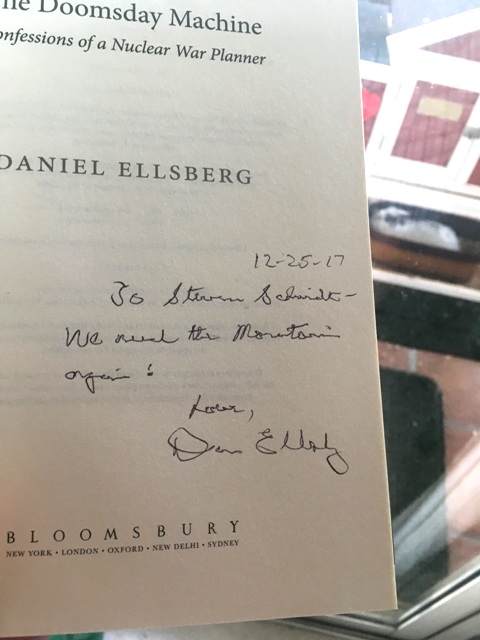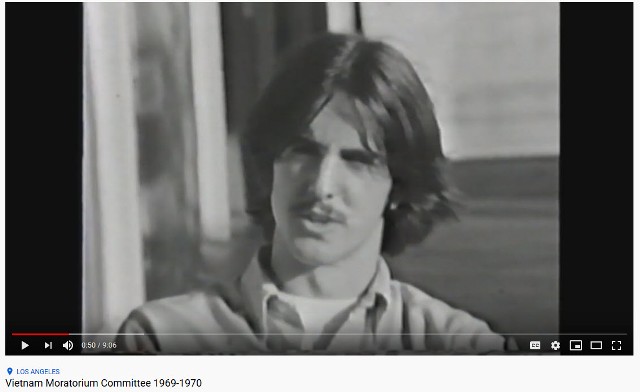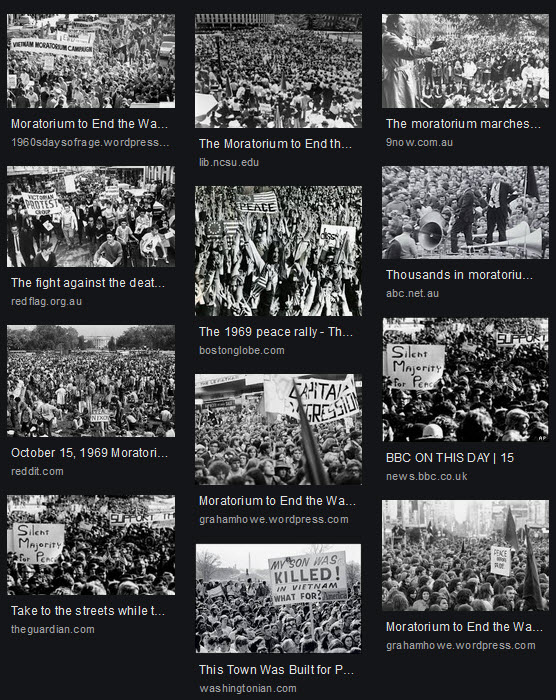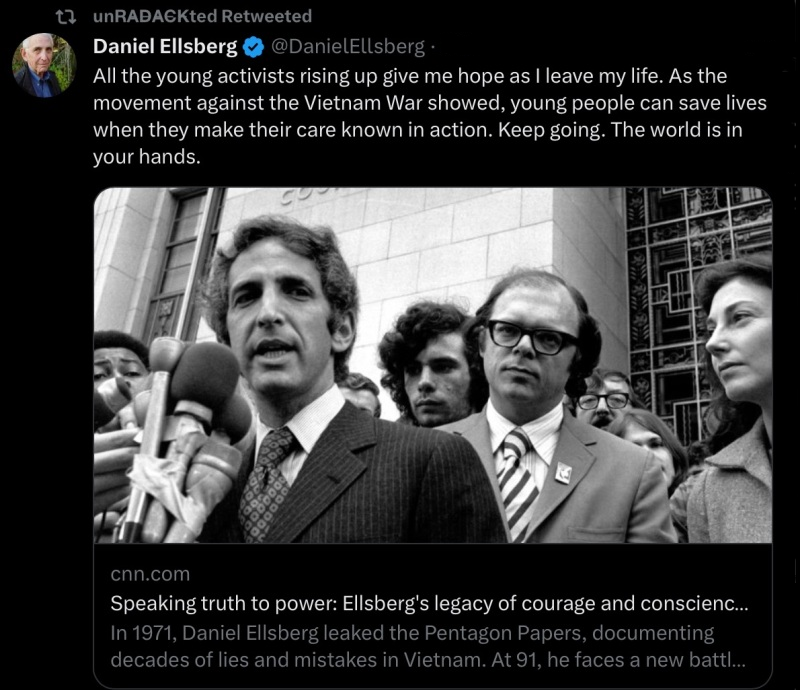Green Institute
About the Green Institute
The Green Institute was a forward-looking center for research and policy based on the global values of the Green movement: nonviolence, grassroots democracy, social justice and sustainability. As the first Green policy institute in the United States with a mission statement and scope of work explicitly based on Green values, the Institute addressed domestic and foreign policy, the challenging "issues of the day, decade and beyond", and offered practical, real world solutions.
______________________________________________________________________
In 2011, the Green Institute posted the following message as it suspended operations:
Letter from the Executive Director (Archived from the Green Institute website)
Dean Myerson, White Salmon, Washington
Announcing the closure of the day-to-day operations of the Green Institute is a difficult task, but we will not be going away, as the results of our work will continue on. Our website will be accessible...
Our efforts and activities have been wide-ranging over the years... We have hosted panels on foreign policy, reforming the American political system, as well as at the US Social Forum in Atlanta...
One of our signature efforts was our green policy wiki database... which will now continue on independently as GreenPolicy360.net. We put extensive effort into researching and cataloging green policies and we are happy that it will continue to grow in the future with the guidance of Steven Schmidt who co-established our organizing effort and site.
We are also proud of the work we supported by author and historian Roger Morris and the science policy and interdisciplinary analysis from Tom Baugh.
Although this work was wide-ranging, at the base of it was always the principles of Green politics that drove us. We hope that the archived website is of interest and use to you.
______________________________
From the Green Institute Archive
Strategic Demands for the 21st Century: A New Vision for a New World (PDF)
Strategic Demands of the 21st Century: A New Vision for a New World
By Roger Morris & Steven Schmidt
______________________________
Green Institute Editor / July 2005
Following are a number of Clips and Excerpts from American Twilight
Copyright 2003 by Steven Schmidt
Chapter 4
Personal Politics
The climate of sunny California was ripe for politics as practiced by young University of Southern California politicos like Donald Segretti and Dwight Chapin. Hollywood, Beverly Hills, Disneyland… the famously trendy Southern California lifestyle contributed to a sense of entitlement and the politics of image flourished in this arena. Ronald Reagan’s image-makers––the consulting firm of Spencer and Roberts––created a style of campaigning that plays again every time a president goes before the cameras and acts with “Reaganesque” flair.
The torch has been passed from USC student politicos to the inner circle of Washington, D.C., politicos who run the world with professional Hollywood skills. The hardboiled “private dick” novels and films of Raymond Chandler and Robert Towne could never match the real-life drama of “Tricky Dick” Nixon and his successors, a political legacy that got its start at USC: Alum Pat Nixon became the president’s wife; Herb Kalmbach became his attorney; and former fraternity row political operatives were hired on as dirty tricksters.
Don Segretti developed his bag of tools and tricks long before he and the “plumbers” were busted in the Watergate complex and the clock began ticking toward Nixon’s resignation. Before Segretti exited stage right, he shared his political skill set with two men responsible for shaping the modern face of American politics as it is now practiced: Lee Atwater and Karl Rove.
All politics is personal. Look behind the scenes, at what’s going on backstage and at the back-stories of the principal players. Look for the motivations and then follow the money trail––it will tell the tale at the end of the day. “Show me the money!” Tom Cruise screams in his Century City tower office in Jerry Maguire. Follow the personal and the financial; the handoffs between political ops and the payoffs. This is “story arc”: the principals, operations, drama and, when the dots are connected, a fleshed-out western.
Nixon politics was hardball politics, his many campaigns infamous for their rough tactics, but his image was forever etched in the public consciousness during the nation’s first televised presidential campaign debate when beads of sweat dripped down his pale face as he debated a polished Jack Kennedy, whose makeup was applied perfectly. Never again would the SoCal political establishment neglect its Hollywood roots.
In the 1960s, Donald Segretti was a “frat rat” who played exceptional hard hardball politics on USC’s fraternity row. His frat buddies called their style of politics “ratfucking.” The deal was to hit the other guy hard––using inventive, over-the-top dirty tricks––and then laugh about it. Take no prisoners, don’t forget payback, do what’s necessary to win: This style of politics has created a legacy that has come to dominate current American politics. The hardball style is vintage Nixon and Hollywood Reagan.
Ronald Reagan’s handlers created the image of a “citizen politician” and scripted a biography of small-town-boy-makes-good. When Ronnie Reagan ran for California governor and then U.S. president, a behind-the-scenes kitchen cabinet pulled strings and opened their checkbooks. The money created the first hugely successful political consulting firm, Spencer and Roberts, and honed Ronnie into an ‘aw shucks’ politician. Watching him was like watching the American icon Will Rogers, with his self-deprecating humor and plain-talking American wisdom. Ronnie and Will both lived in the same upscale westside LA neighborhood, and both were western images brought to life.
Before Reagan, Southern California Cold War power brokers had Richard Nixon as their man, but his inability to speak convincingly to the camera or directly to the audience behind the camera became a turn-off in the age of television. The Nixon drama revealed a brand of hardball politics that was accurately captured in Roger Morris’s award-winning biography Richard Milhous Nixon, The Rise of an American Politician...
Opposition politics (oppo) is hard-hitting politics, political tricks, behind-the-scenes big money, 365-day-a-year campaigning and constant electioneering, mixed with the science of public relations, focus groups, push polling, Hollywood image-making, spin and delivery. Each of these has its place in the Bush administration–Karl Rove operational playbook. Donald Segretti got the ball rolling and passed the game plan to Lee Atwater and Karl Rove.
Before Segretti was busted, he’d shared what he knew in a close working relationship with Lee Atwater and Karl Rove in Texas. Atwater went on to become the strategist who, along with Roger Ailes, “got” Michael Dukakis during the 1988 presidential campaign.
This led to “war-room” politics––an instant-response mentality that carried over into the 1992 Clinton campaign. The ripples from Lee Atwater produced a hardball style of politics in the “new” Democratic Party that fought back by hitting the Republican Party using Atwater-Ailes-Rove tactics and tools. So it goes, attacks and counterattacks.
Karl Rove is not far removed from the decisions shaping the administration’s foreign policy. His advice and counsel to the president clearly don’t end at the ocean’s edge. He is tough, uncompromising and overtly political. He sees the big picture and acts. Politicos talk of an elephant’s memory, of “Rovian memory” and “Rovian payback” delivered to those who oppose the president…hardball payback.
Rove is a prime mover of Bush’s political strategy, tactics and operations and his history of hardball, dirty-tricks politics provides a background for the run-up to war, the administration’s political waging of war and its aftermath. To what extent was Rove’s hardball political advice a basis for the hardball U.S. foreign policy toward the United Nations and countries that didn’t support Bush’s policy? To what extent was Rove’s political advice played out in the administration’s merging of politics and war? To what extent did Karl Rove orchestrate campaigns against the opponents of the president’s war?
Academics tend to look at academic questions, while, in the trenches, political operatives roll up their sleeves and go to work. Academics like Peter Trubowitz, in Defining the National Interest: Conflict and Change in American Foreign Policy, and Charles Kupchan, in The End of the American Era, look at underlying causes for foreign policy, reasoned national security decisions, historic eras and economic and political forces at work. But what if policy is waging its own war, with character as destiny? To what extent did the political agenda developed by Karl Rove become a force behind U.S. foreign policy? He reveled in his wedge strategy, peeling off former Democratic and independent voters who were attracted to patriotism and bellicose slogans and policies.
Rove’s Republican hardball style of politics played well in the American heartland after 9/11, and his influence will be felt far beyond his time. Under Rove’s guidance, the president’s policies and politics have shaped new contours for the Republican Party.
- What used to be called liberal is now called radical;
- What used to be called radical is now called insane.
- What used to be called
- reactionary is now called
- moderate, and what used to
- be called insane is now
- called solid conservative thinking.
- – Tony Kushner, American playwright, 1995
______________________________________
From the Green Institute Archive / retrieved via the Wayback Machine
- https://web.archive.org/web/20070707093412/http://www.greeninstitute.net/subpages/editor_2005-12.asp
- https://web.archive.org/web/20070707195843/http://www.greeninstitute.net/subpages/editor_2005-11.asp
- https://web.archive.org/web/20070707093543/http://www.greeninstitute.net/subpages/editor_2005-08.asp
- https://web.archive.org/web/20070707093702/http://www.greeninstitute.net/subpages/editor_2005-07.asp
- https://web.archive.org/web/20070707093134/http://www.greeninstitute.net/subpages/editor_2005-05.asp
- https://web.archive.org/web/20070629223712/http://www.greeninstitute.net/subpages/morris_2005-04-19.asp
- https://web.archive.org/web/20070707200018/http://www.greeninstitute.net/subpages/editor_2005-04.asp
- https://web.archive.org/web/20061212183811/http://www.greeninstitute.net/subpages/editor_2005-03.asp
- https://web.archive.org/web/20070707092817/http://www.greeninstitute.net/subpages/editor_2005-02.asp
- https://web.archive.org/web/20070708023105/http://www.greeninstitute.net/subpages/editor_2004-11_adam.asp
- https://web.archive.org/web/20070708023157/http://www.greeninstitute.net/subpages/editor_2004-10.asp
2006
_____________________________________________________________
File:Surviving Victory WashingtonDC conf 09 12 06.pdf
_______________________
How a High School Debate Topic Changed the Course of My Life
From Green Institute / Editor:
When I was in high school my 'veritas' debate team argued the sanity and dangers of nuclear proliferation. The given topic of the year for high schools was 'nuclear proliferation and Nth countries'. It was the height of the Cold War, shortly after the Cuban Missile Crisis, and the spread of nuclear capabilities, weapons, delivery systems and geo-conflict greatly concerned many students about to enter the real world.
Today, forty years on, the world we've inherited - and which we are shaping with our rationales and actions - is witnessing escalating threats to peace. A new generation of 'useable' nuclear weapons is in the process of development by the US, some are already forward deployed. Regional conflicts, asymmetrical warfare, terrorism, brutality and assassinations, hate and anger are spreading across large swaths of the globe.
In this dangerous world, fortunately, the critical issues of the day are being debated and addressed by young thinkers who are looking for solutions beyond the failed answers of the past.
This year's national debate topic, a subject being addressed over the course of the school year, should make us all pause for a moment. Students from around the nation are examining overarching issues of war and peace. They are bringing new answers to address conflict and war.
Clearly, on the merits, history demonstrates the costs of war, the failed argument of those who've promised - and continue to promise - 'war delivers peace'.
Let us hope the insight and wisdom coming from our classrooms will provide a future argument to the dismal science of war, an alternative vision that sets out an authentic path to peace.
September 2004
SJS / Steven J. Schmidt
Editor, Green Institute
_____________________________________
Each year in high schools across the U.S., high school debate teams argue a single debate topic.
Resolved:
"Debate is probably the single most important course that I ever took in school and has held me in good stead my entire life," said Gerald Kogan, who retired from the Florida Supreme Court in 1998. "You learn how to do research, how to think in a logical and orderly manner, how to put your brain in gear before you put your mouth in motion... It also gives you a great deal of self-confidence and to a large extent, the courage of your convictions."
_____________________________________
Earth Day 2020
Original Art by 'OS' Olivia Schmidt / BY-NC-CC
GreenPolicy360:
On the 50th Anniversary
Memories on the Road to the First Earth Day
By Steven Schmidt / GreenPolicy360 Siterunner
It started on a Schwinn bike in the mid-1960s. My road to April 22, 1970. The day that would be called the first "Earth Day" began years earlier with a response by George E. Brown, our newly elected local Congressman, to my young student's simple query -- can you help me?
• https://www.greenpolicy360.net/w/George_E._Brown_Jr
In his office, with my bicycle in the lobby, I asked George, a big man with a big smile, to help as I prepared for a high school debate arguing the risks of nuclear war and 'nth country proliferation'. A long friendship began as I attempted to sort out the school year's debate topic -- nuclear weapons and war. It was a subject about which the Congressman had strong feelings.
Our era was the height of the Cold War and it had suddenly gotten hotter in 1962 with a near catastrophe of US-Russia nuclear missile launches during the Cuban US-Russia Crisis. I wanted to better understand the international problems that could end in nuclear disaster. I figured a Congressman could at least point me in the right direction.
My perspective as a kid from East Los Angeles was limited but I knew enough to know that 1962, one year before Brown was elected, came close to delivering that hot flash in the sky.
Schools practiced the Duck and Cover and those sirens became real. The possibility of death by nuclear weapons was not far off. I know this both viscerally and intellectually. My thought in contacting the Congressman was that I could get a debate team advantage by knowing the details of nuclear weapons and I knew Congressman Brown was in the news talking about them.
I didn't know that day that the man who was about to become a thirty year + friend, and mentor to me, was also a hard negotiator. He told me he'd help me with nuclear issues for my debating, if I would drive around on my bike in neighborhoods during his re-election campaigns and put up signs (and take down signs.) I eagerly agreed.
Rep. Brown would go on to head up the science and technology committee in the House of Representatives, become instrumental in the creation of the EPA, the approval of the Clean Air Act, overseeing federal 'Big Science' initiatives, moving foward a first generation of NASA earth science missions, including LANDSAT and beginning the data baselines of new earth system science.
George, as I came to call him, would draft the first National Climate Act in 1978 and shepherd its passage. He also was, at times, a controversial 'peacenik', he opposed the Vietnam War's policies. He was opposed to the nuclear weapons arms race.
That day he and I first met was at the beginning, before his decades long career and before I shared many moments and worked together over the years as both of our work ran on parallel paths....
- GreenPolicy360 founder Steve Schmidt at Press Conference with Congressman George Brown
- 1969
Nixon almost took the Vietnam war nuclear in November 1969
Here, take a look at this passage from Dan Ellsberg's book, Doomsday Machine: Confessions of a Nuclear War Planner from our GreenPolicy360 associate --
"There was pressure to make the war larger" and "nuclear targets were picked" by the Nixon administration, the Pentagon Papers whistleblower revealed.
• https://www.strategicdemands.com/doomsday-machine/
• https://www.amazon.com/Doomsday-Machine-Confessions-Nuclear-Planner-ebook/dp/B074HZMN71/
Richard Nixon and Henry Kissinger had a plan to end the war in Vietnam by escalating and going even beyond B-29 bombings with greater magnitude than the bombing tonnage of WWII. The nuclear war plans were drawn and ready to go -- what stopped it?
The October 1969 nationwide Moratorium...
I had become a friend of Dan Ellsberg as he went through his now well known preparations and release of the "Pentagon Papers".
As a leader of the anti-war efforts, I listened to Dan's revelations that found their way into my speeches, work, travels. The lies of the leaders of the country became top of mind when the facts of the war were revealed. That the president was close to dropping nuclear weapons to further escalate was not known to me at that time, but certainly our strategy of the Vietnam Moratorium Committee was to demonstrate to the President and country that mainstream American opposed the carnage and the failed policy of inserting the US into a civil war between North and South Vietnam.
The Moratorium teach-ins were planned as a series of peace demonstrations into the spring of 1970. We knew the protests had to have a positive message with more teach-ins. Our 1969 organizing led to 1970 direct action teach-ins and the environmental protection messages of the first Earth Day in April of 1970.
~
Update: 2023
News about a new documentary based on Dan Ellsberg's award-winning book, "The Doomsday Machine".
* https://greenpolicy360.net/w/File:PBS_Documentary_-_Movement_and_the_Madman_6.png
🌎
March 2023
PBS
The Movement and the 'Madman'
President Nixon with his Adviser, Henry Kissinger, come close, too close, to ordering the use of nuclear weapons
PBS | PREMIERE MARCH 28, 2023 ON AMERICAN EXPERIENCE
The documentary film tells the little-known story of a dramatic showdown between a protest movement and a president.
The Vietnam Moratorium mobilization of October-November 1969 is revealed to have politically influenced and stopped US President Nixon from using nuclear weapons
- Dan to Steve: "We need the Moratorium again"
- Steven Schmidt, Moratorium Coordinator, 1969
- @University of Southern California
Vietnam Moratorium - California
Vietnam Moratorium for Peace
○
- March 24, 2023
○
